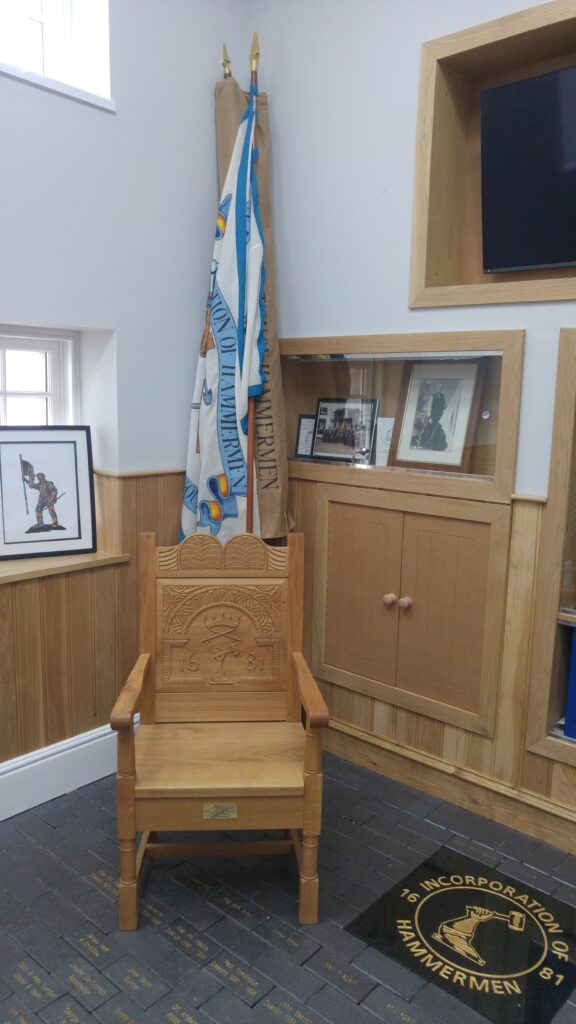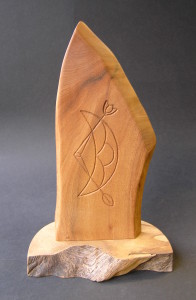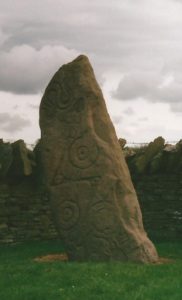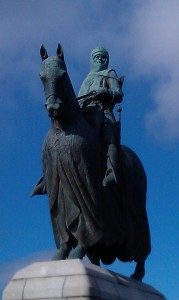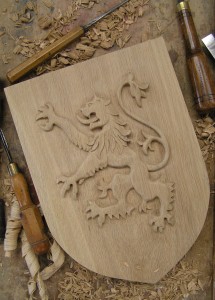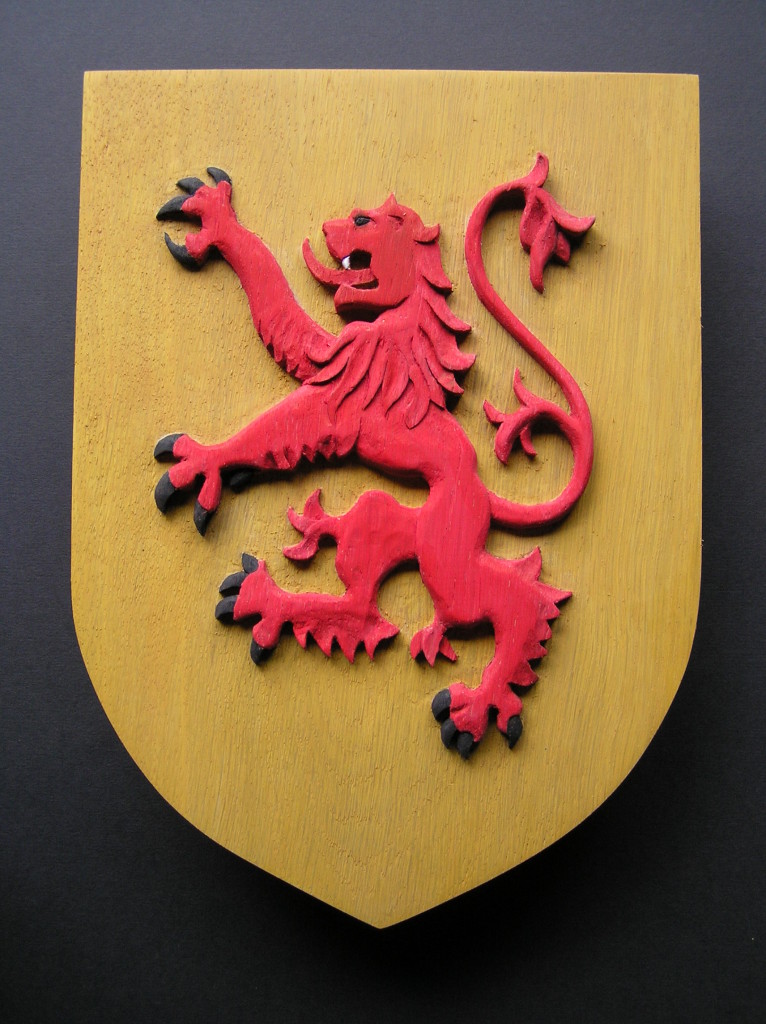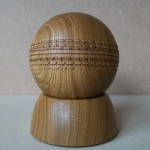Just as the Covid Lockdown happened, I started work on this oak chair commission from the Selkirk Incorporation of Hammermen.
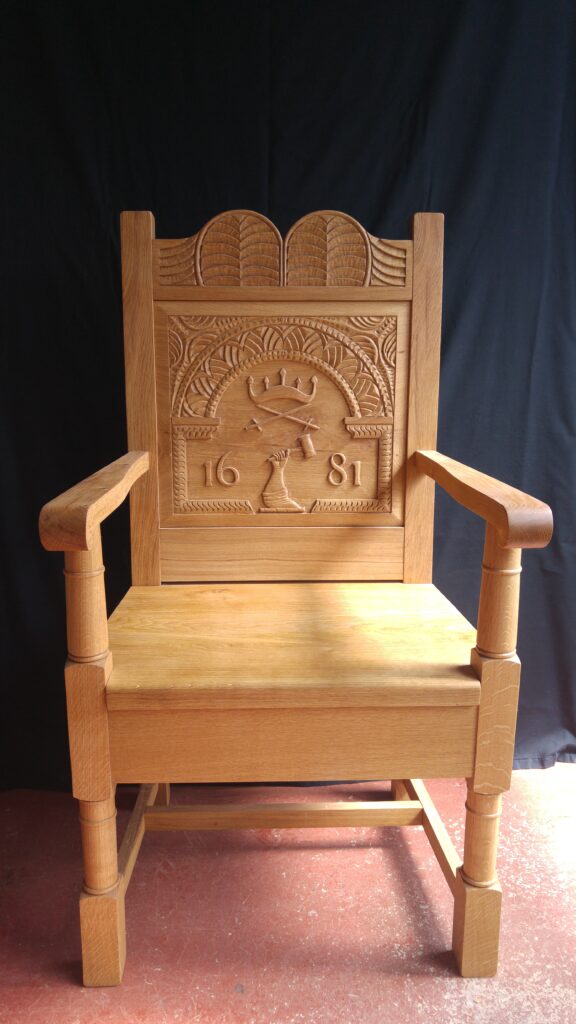
The Incorporation was established in 1681. Historically most guilds had chairs carved with their emblems and decoration on the back. The Hammermen no longer had one in their possession.
A guild member saw a chair on the BBC Antique Roadshow programme. It had the Selkirk Hammermen emblems and date of Incorporation carved into it and it looked original. The owners who were in Northern Ireland said the chair had been in the family for generations. It was not for sale..
The Hammermen commission me to make a new oak chair.
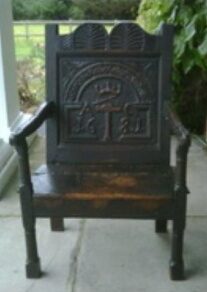
The dimensions and details were worked out from studying still images from the TV programme and from this single photo, which I think came from the owners. I also looked at contemporary examples on line and from museums.
I drew out a full scale plan for the carved details. The Hammermen approved the plan and then I started the carving work.
I kept the design as close to the original as possible, but with the modern Hammerman emblem of the arm and hammer replacing the single hammer. I also raised the seat height to a more comfortable and usable level. We decided the chair was to be made from locally sourced oak. I choose a single quarter sawn panel of oak for the back. All the carving was done by hand.
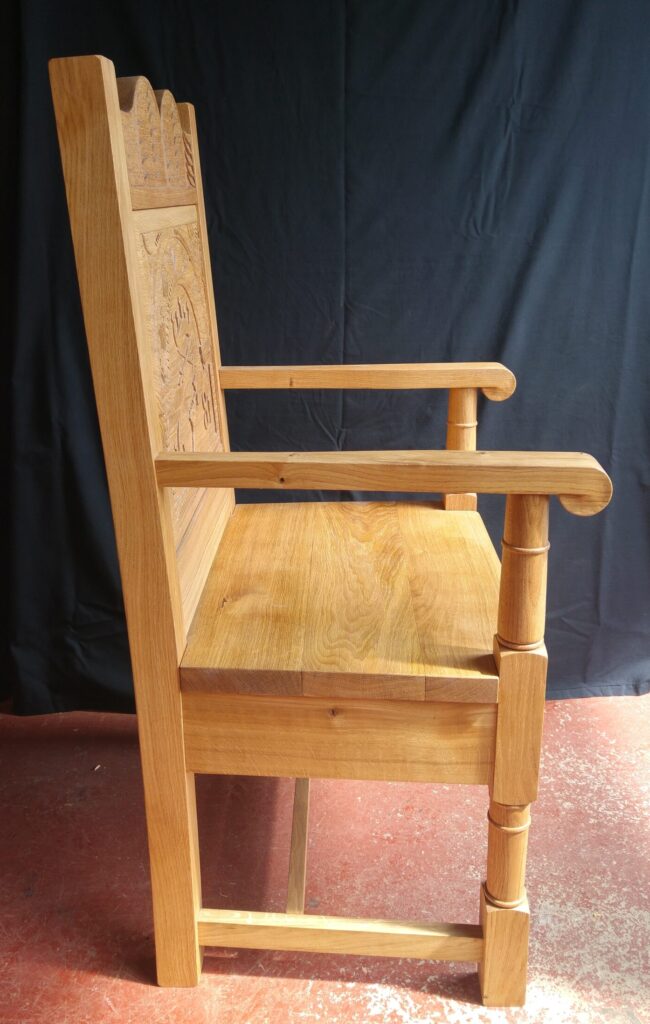
I assembled the chair with mortice and tenon joints, with no nails or screws used in the frame construction. The finish was several coats of Danish oil then a topcoat of clear satin lacquer to keep it maintenance free.
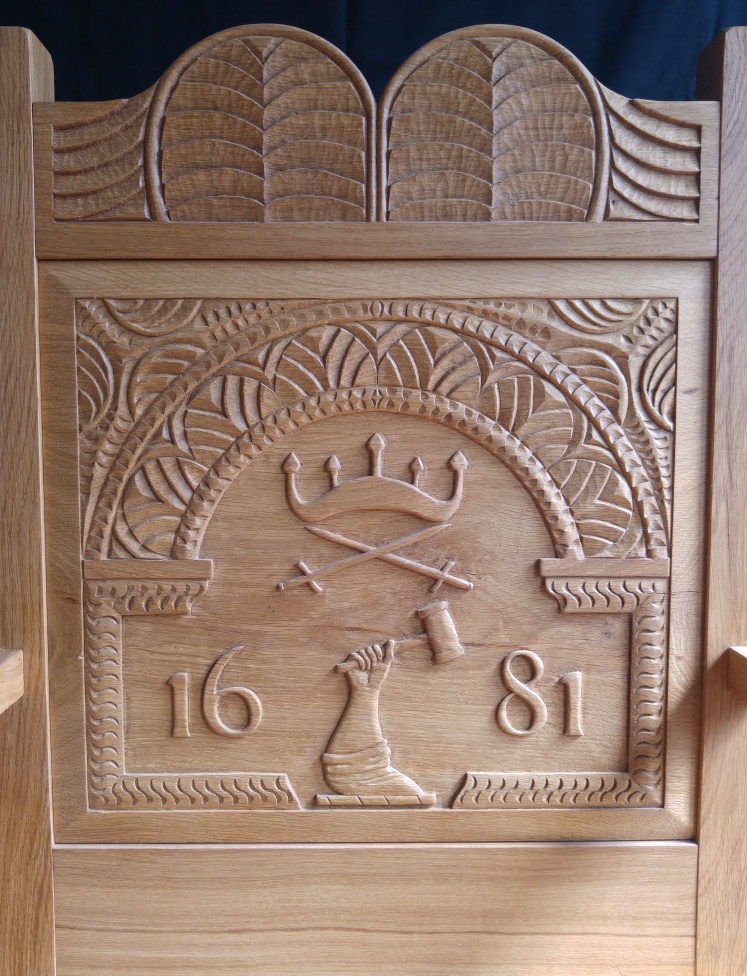
I handed over the completed chair in time for the Selkirk Incorporation of Hammermens opening of their new hall in August 2021.
